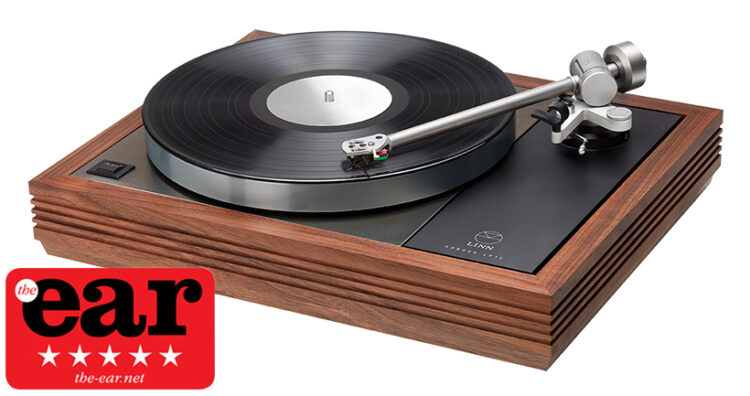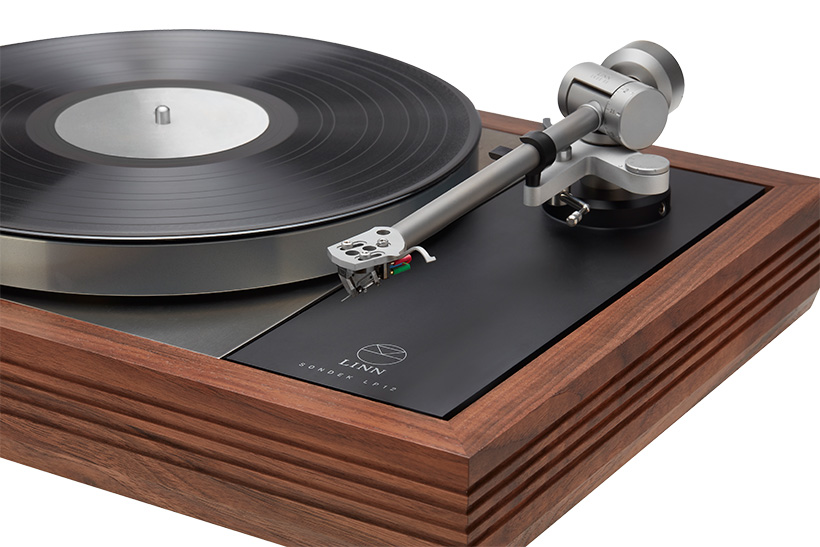Linn Sondek LP12 Turntable with Ittok LV11 arm
Original price was: R42,000.00.R12,500.00Current price is: R12,500.00.

I have been involved in reviewing hi-fi equipment for some time now, but only occasionally have I been genuinely excited but also nervous about receiving a piece of equipment to audition. When the editor told me that his request to Linn Audio for a review sample of their range-topping LP12 had been approved, I actually got goosebumps. For those of us of a certain vintage, the LP12 has been an object of desire for several decades. First introduced in the early ‘70s, it is almost half a century since it first arrived and although a time traveller from those days would recognise a 2022 LP12, it would in fact be a very different machine from its forbears. I bought my first LP12 back in the summer of 2018. It was a pre-owned model from the early ‘0s, but I was able to have it brought pretty much up to date with a whole lot of new parts. In fact all that remained of the one I bought was the Ittok tonearm and the dust cover. This ability to upgrade and modernise an LP12 is one of the keys to its longevity.
Unlike many more modern turntables, the LP12 needs a specialist to build it, to install it and to maintain it. Thus Linn asked Alex Scott-Simons, the managing director of Stone Audio in Poole and an LP12 specialist, to build and then deliver and install the review model on their behalf, and he kindly took on the task. In the first week of December he arrived and unloaded the partly assembled device along with the pieces he needed to fit in situ, and then went through the meticulous installation of the deck on the top shelf of my system rack. The Klimax is the top of the current LP12 line up. The Klimax has a Urika II phono stage built into the fluted walnut plinth and an Ekstatik MC cartridge fitted to the Ekos SE tonearm. The external DC power supply is the new Radikal, a surprisingly heavy device in a machined aluminium case, which in the review sample was anodised in silver (anodised black is also available). Because the power inlet on the Radikal is recessed under the casing, it proved impossible to use any mains cable except the one supplied, so no hefty Furutech-plugged aftermarket options can be used. As the Linn supplied one worked so well this was not an issue, but I mention it for those of you who have invested in expensive mains cables.

Alex spent a lot of time fine tuning the installation, in particular making sure that the turntable was completely level, which is even more critical for an LP12 than for almost any other turntable. Finally, we attached a pair of Audioquest Fire RCA interconnects to the analogue inputs on my Lyngdorf TDAI3400 amplifier. The hinged dust cover was lifted off the plinth for replay, and a record chosen at random was put onto the turntable platter – Alex simply wanted to ensure that all was well, and suggested that we allow the machine to warm up after its journey to Devon. Thus assured, he bade me farewell and left me alone with the Klimax LP12.
Operationally, this LP12 is very similar to my own. There is a rocker switch on the front left corner of the top plate. Press it once and it turns red and the platter starts moving, quite slowly at first, taking about 25 seconds to reach its main operational speed of 33.3 rpm, about the same as my own LP12 with Lingo4 PSU. Once it reaches this speed the red light dims, and using the damped arm lift mechanism on the Ekos SE, the precious diamond is placed down with great gentleness, which I found very reassuring, as the cantilever on the Ekstatik cartridge looks much longer and more vulnerable than that on my own Dynavector cartridge. The prospect of my cackhandedness damaging it was never far from my mind. As the review period progressed I relaxed more, and actually found the Klimax no more difficult to use than my own deck, which is hardly surprising.

Sound Quality
LP12 users have long valued the ability of this turntable to communicate the rhythmic heartbeat of the music they are playing, and I am very happy to report that this ultimate version still packs that almost visceral punch. It may be the most refined LP12 yet built, but it loves to get down in the mosh pit and boogie along to the music when appropriate. On the other hand it can also do subtle and even gentle when required, able to reproduce solo piano and acoustic guitar with great finesse and delicacy.
I put to together a very eclectic mixture of records to play on the LP12, and I did not find anything to which it did not do full justice. I started, as I often do, with Bob Dylan’s Blood On The Tracks on Mobile Fidelity’s excellent pressing, and here the instrumentation was clearly set out across the soundstage, the acoustic guitars sounding distinctively different and that voice placed forward into the room on the opening track Tangled Up In Blue. As previously mentioned, the rhythmic drive carried the song along beautifully, and the end result was totally engrossing. My original 1973 pressing of Dark Side of the Moon on the Harvest label sounded incredibly fresh, as it did when I first carried it home to play on my Garrard SP25 MkIV when it was released, but with levels of detail and depths of bass which were way beyond the capabilities of almost any replay system back then.

From then on the Klimax never put a foot wrong, no matter what I asked it to play, finding tiny nuances in recordings that I thought I knew well, such Stephen Stills’ Manassas, where he was joined by musicians including Chris Hillman of Byrds and Flying Burrito Brothers fame and the twin percussion attack of Dallas Taylor on drums and Joe Lala on congas, timbales and other percussion instruments. If you are not familiar with this double album it is highly recommended. Its four sides are each given a title and each sticks to a musical genre as its main influence, with rock, country, bluegrass and blues all getting their moments in the sun.
Jazz was also very well served by this Linn. I switched to 45rpm (the switch turns to green at this speed) and played all four side of Analogue Productions’ The Sound Of Jazz (originally released on Columbia in 1958) which has just two tracks per side. The sound was ravishing. Every musician’s playing was carried into the room with total realism. Plucked double bass had depth and the warmth of that huge wooden body resonating, and drums sounded crisp and very real.

As it was December I brought out my copy of Handel’s Messiah, performed by the Academy of Ancient Music under Christopher Hogwood, with the choir of Christ Church Cathedral, Oxford and four excellent soloists, including perhaps my favourite soprano, Emma Kirkby. This was released on the L’Oiseau Lyre label, owned by Decca, in 1980 and I have played it many times since then. Never has it sounded as good as it did through the Linn Klimax. Whether in the choral pieces or the individual arias, this was a wonderful, emotional listening experience, only slightly interrupted by having to turn the two discs over.
A good modern pop recording, such as George Ezra’s Staying At Tamara’s came across really well, with the singer’s very pleasing baritone being projected well into the room and the quality of the production very easy to hear. The Linn’s pace and timing really propelled the music forward. I am not going to catalogue the large number of records that the Klimax LP12 played for me during its four week stay, but it consistently delivered an extraordinary listening experience.
Conclusion
Let’s address the elephant in the virtual room. Yes this is an expensive turntable, and it may be beyond the financial reach of many of us. However, if you are in the market for a machine at this price point, I would be very surprised if the Klimax was not on your short list. It comes loaded with an extraordinarily good moving coil cartridge, a robust and extremely well engineered power supply, a tonearm that can hold its own against the very best and a suspended subchassis design that has almost half a century of experience behind it. It also has a dustcover (which should not be under-estimated), a beautiful wooden plinth and looks which have stood the test of time.

If you already own an LP 12, and you are wondering whether to start on the path towards upgrading it to Klimax specification all I can say is – go for it. This is the very best turntable that Linn has ever produced, and it has arrived with the knowledge and experience that can only come from almost half a century of research and development. It is a major achievement, even by that company’s high standards.
If you are already into vinyl replay and wondering whether the Linn sound is for you and are balking at the Klimax’s price, you can start with a lower specification model and over time, in conjunction with a good specialist dealer, build it up to the full Klimax specification. Many have trodden that path and are still very happy LP12 users to this day. I know that I shall almost certainly now take a step along that path, by upgrading to the Karousel bearing for example.
What I could not do, as the Klimax was here on loan and as a complete package, was try different cartridges or my own phono stage with the rest of the player. The Urika 1was originally set up for Linn’s previous top end cartridge the Kandid (which is still available), and luckily the loadings for the Ekstatik are obviously similar. However, it is not user configurable in the way that a standalone phono stage worthy of this turntable would be, which means whether or not your cartridge will work well in this context is in the lap of the gods. I believe that the all digital Urika 2 can be configured by the user but this will only work within an-all Linn system, and is therefore beyond the scope of this review.

Some potential buyers may be deterred by stories of the LP12’s need for regular servicing, and that it is somehow a bit of a faff to use. While it does no harm to have a skilled engineer check it every few years, in practice once it is installed this is an easy to use and very unfussy turntable. Give it a solid base from which to play, protect it from external vibrations, and you will have a musical companion for the rest of your days.
I started the review period after Alex had left me slightly nervous, slightly in awe of the Klimax LP12. By the time he came to collect it last week it was a close and trusted friend, and the four weeks which I spent with it were a genuine delight and a reminder of how much a really good record player can do for the soul.
Description
Specifications:
Linn LP12 Klimax
Type: suspended-subschassis, belt-drive turntable with external power supply
Speeds: 33 1/3 RPM, 45 RPM.
Supplied Tonearm: Ekos SE
Drive mechanism: rubber belt
Speed Control: electronic
Motor: brushed DC with moving coil rotor
Platter type: 12-inch zinc alloy with felt mat
Platter weight: not specified
Main bearing type: Linn Karousel single point
Plinth material: wood & metal
Analogue output: single ended RCA sockets
Accessories: dust cover
Dimensions (HxWxD): 140 x 445 x 356mm
Weight: not specified
Warranty: 5 year parts and labour















